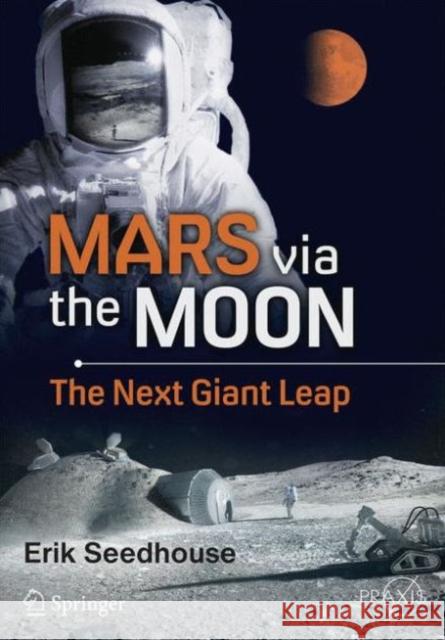Mars Via the Moon: The Next Giant Leap » książka
Mars Via the Moon: The Next Giant Leap
ISBN-13: 9783319218878 / Angielski / Miękka / 2015 / 170 str.
MOMENTUM IS BUILDING for a return to the Moon. NASA's international partners on the International Space Station are in favor of returning to the lunar surface, as are India and China. The horizon goal may be Mars, but the political, funding and the technological and medical infeasibility of such an objective means the next logical step is a return to the Moon. While much has been learned about the Moon over the years, we don't understand its resource wealth potential and the technologies to exploit those resources have yet to be developed, but there are a number of companies that are developing these capabilities. And, with the discovery of water in the lunar polar regions, plans are in the works to exploit these resources for fuel for transportation operations in cis-lunar space and in low Earth orbit (LEO). The time has come for commercial enterprise to lead the way back to the lunar surface. Embarking on such a venture requires little in the way of new technologies. We don't need to develop super-fast propulsion systems like those required to get us to Mars safely, nor do we need hundreds of billions of dollars that the experts reckon it will cost to transport humans to the Red Planet. What we do need is a place to test the technologies and deep space experience that will enable us to build a pathway that will lead us to Mars. That place is the Moon and this book explains why.The time has come for commercial enterprise to lead the way back to the lunar surface. Embarking on such a venture requires little in the way of new technologies. We don't need to develop super-fast propulsion systems like those required to get us to Mars safely, nor do we need hundreds of billions of dollars that the experts reckon it will cost to transport humans to the Red Planet. What we do need is a place to test the technologies and deep space experience that will enable us to build a pathway that will lead us to Mars. That place is the Moon and this book explains why.The time has come for commercial enterprise to lead the way back to the lunar surface. Embarking on such a venture requires little in the way of new technologies. We don't need to develop super-fast propulsion systems like those required to get us to Mars safely, nor do we need hundreds of billions of dollars that the experts reckon it will cost to transport humans to the Red Planet. What we do need is a place to test the technologies and deep space experience that will enable us to build a pathway that will lead us to Mars. That place is the Moon and this book explains why.OMENTUM IS BUILDING for a return to the Moon. NASA's international partners on the International Space Station are in favor of returning to the lunar surface, as are India and China. The horizon goal may be Mars, but the political, funding and the technological and medical infeasibility of such an objective means the next logical step is a return to the Moon. While much has been learned about the Moon over the years, we don't understand its resource wealth potential and the technologies to exploit those resources have yet to be developed, but there are a number of companies that are developing these capabilities. And, with the discovery of water in the lunar polar regions, plans are in the works to exploit these resources for fuel for transportation operations in cis-lunar space and in low Earth orbit (LEO). The time has come for commercial enterprise to lead the way back to the lunar surface. Embarking on such a venture requires little in the way of new technologies. We don't need to develop super-fast propulsion systems like those required to get us to Mars safely, nor do we need hundreds of billions of dollars that the experts reckon it will cost to transport humans to the Red Planet. What we do need is a place to test the technologies and deep space experience that will enable us to build a pathway that will lead us to Mars. That place is the Moon and this book explains why.The time has come for commercial enterprise to lead the way back to the lunar surface. Embarking on such a venture requires little in the way of new technologies. We don't need to develop super-fast propulsion systems like those required to get us to Mars safely, nor do we need hundreds of billions of dollars that the experts reckon it will cost to transport humans to the Red Planet. What we do need is a place to test the technologies and deep space experience that will enable us to build a pathway that will lead us to Mars. That place is the Moon and this book explains why.











